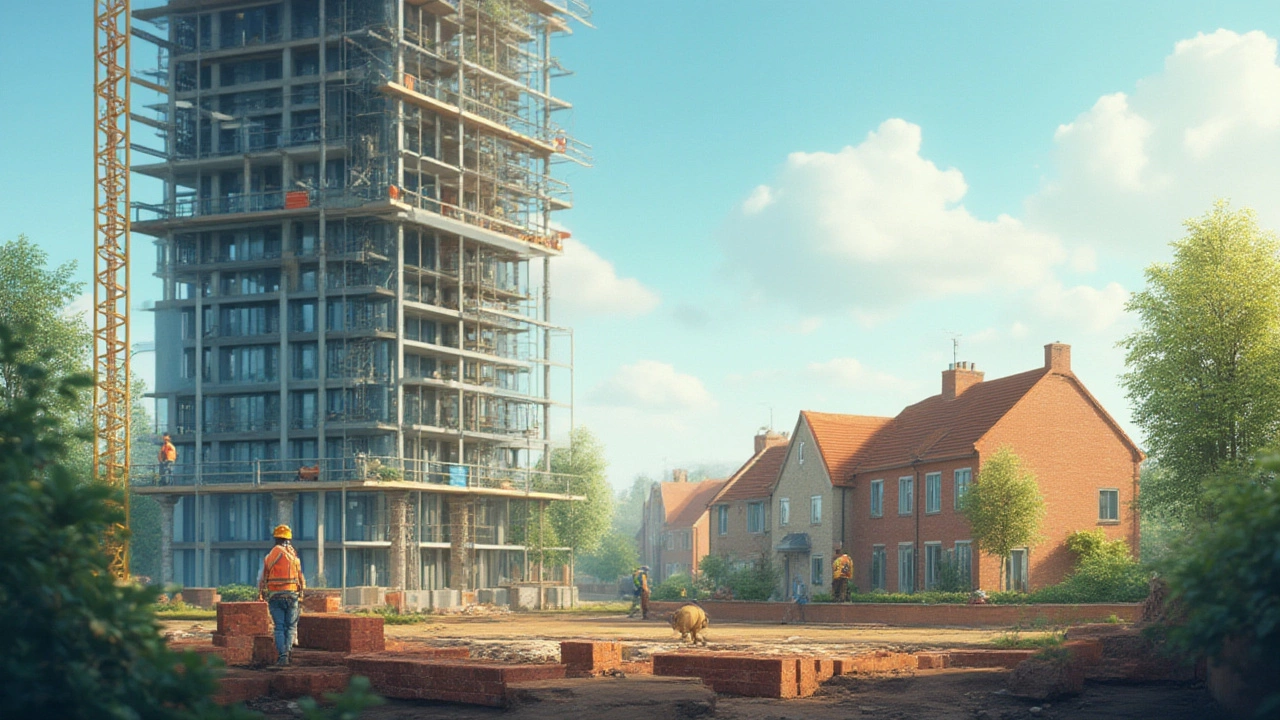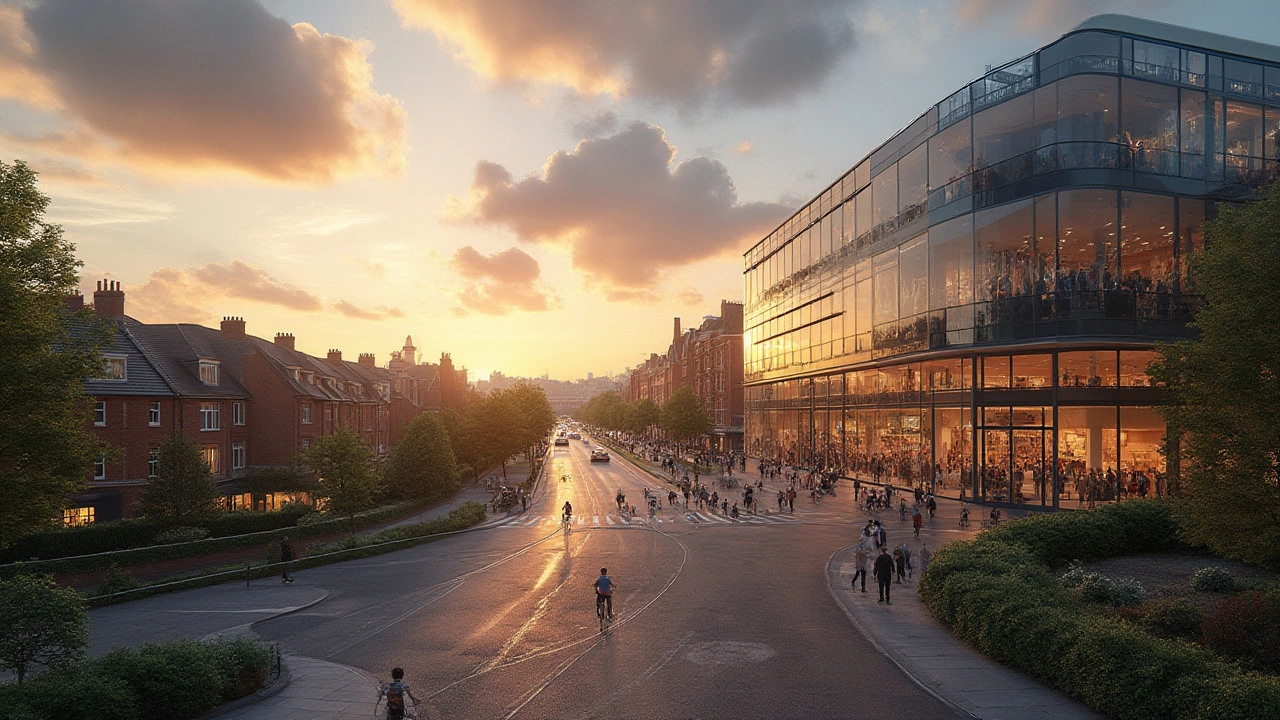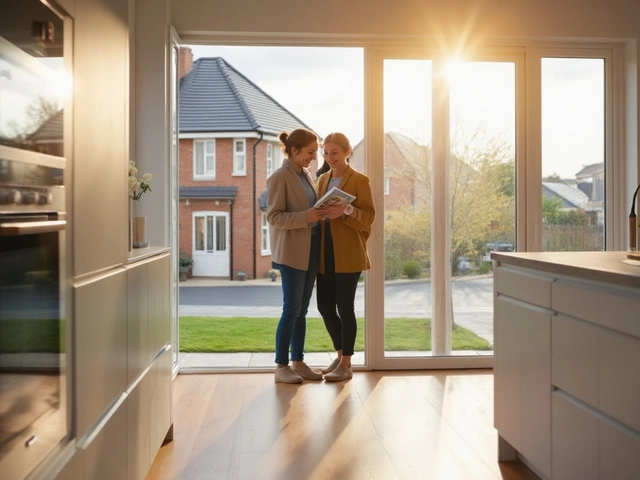Ever walk by a towering office block going up and wonder, "Is all construction just big businesses making more space?" Not by a long shot. The construction world is as split as it gets, bustling with both commercial and non commercial projects. This isn't just trivia that only contractors care about—it shapes everything from traffic in your area to the job market and even the skyline you see every day. Digging into what makes construction "commercial" or "non commercial" isn't just useful; it's the real difference between a hospital wing and your neighbor’s new deck.
What Counts as Commercial Construction?
Commercial construction might just be what most folks think of when they picture cranes, hard hats, and busy sites. We’re talking stuff like shopping centers, office buildings, hotels, warehouses, factories, schools, and even that trendy restaurant that just opened on Main Street. If the finished space is meant for businesses making money or providing public services, it’s usually commercial. It’s a world with its own rules, a ton of regulations, larger budgets, and schedules that leave little room for error.
Some wild stats: in the United States alone, commercial construction spending reached over $500 billion in 2024, making it the backbone of how cities modernize and expand. Think about it—the reason you have a place to work, grab groceries, or hit the gym isn’t magic. Someone decided a commercial project was worth it and hired a team that could navigate zoning hearings and sometimes months (or years!) of planning before a single wall went up. The average timeline for a new office complex is at least 18-24 months—just try wrapping your head around the level of coordination that takes.
And there’s a lot more behind the scenes. Commercial sites are often much larger and physically demanding than your typical house job, so the machinery is on another level. While your backyard reno might need a wheelbarrow and a drill, a high-rise calls for tower cranes, massive concrete pumps, and armies of steelworkers. Safety rules are tough and regularly audited, and—here’s a big one—the funding is usually secure, coming from banks, investors, or government programs. Construction managers often joke that handling commercial projects is like playing chess on a hundred boards at once.
Tip: If you’re looking to get work done on a building where the public will visit or work, you’re definitely diving into commercial territory. This comes with building codes that focus extra hard on accessibility—the Americans with Disabilities Act (ADA) is a monster document commercial builders know inside and out. Try skipping some of these rules and you’ll find yourself paying massive fines, not to mention struggling to get occupancy permits.
Non Commercial Construction: Where We Live and Play
Now, flip the coin. Non commercial construction is everything else—especially residential homes (from tiny houses to McMansions), apartment buildings (that don’t have stores or offices), cabins, even garages and sheds. When you see contractors working on houses down the street, or apartments going up near the park, you’re walking right into the heart of non commercial work.
Here’s the crazy thing: as huge as commercial construction seems, non commercial—especially single- and multi-family homes—actually eats up a bigger chunk of the construction labor force, with over 3 million workers in the U.S. alone. That means most construction jobs are probably happening in someone’s future living room right now. This side of the industry is way more personal and flexible. Most clients are homeowners or small business owners, not giant corporations, so budgets can be tighter and plans change more often when the costs grow.
Timelines here are generally shorter—a new home might wrap up in 6-9 months, while a basic kitchen overhaul can take just a few weeks. Regulations are still strict, especially with electrical and fire codes, but you’re not going to see the same level of scrutiny you’d face with a new skyscraper. However, don’t let the smaller scale fool you: getting permits for a new house or a second-story addition can still be a headache if you don’t plan ahead.
One cool tip: If you’re thinking about building or renovating, check your city’s zoning maps online before hiring anyone. Residential projects get tripped up by zoning more than anything else (for example, you might not be allowed to build that extra garage unless you have enough "setback" from the property line). Skipping this step is the fastest way to waste weeks or even months waiting on a green light.
And let’s be real—non commercial construction comes with its own set of stressors: convincing the city council to allow a granny flat, working out whether your house is in a floodplain, and dealing with constant design tweaks when someone in the family wants a bigger closet at the last minute. But here’s the upside: you actually get to live in (or rent out) the results. It’s one of the few industries where you literally build your own future shelter or investment, plank by plank.

Mixing the Two: Where Lines Get Blurry
It might seem easy to split construction into neat categories, but things rarely work that way for long. Some projects fit in both, or at least blur the lines so much that even the pros can disagree. Think of a mixed-use building with apartments on top and shops on the ground floor—half commercial, half residential. Or what about a church, a private school, or a community center? Are those commercial just because the public can enter? Technically, it often comes down to who’s using the building and whether it’s earning money.
This is where construction codes get really interesting. Mixed-use buildings—super popular in fast-growing cities—have to juggle both residential and commercial regulations. For example, fire sprinklers designed for a shop won’t cut it for families living upstairs, and vice versa. Zoning boards spend ages debating these projects, and insurance companies look at every square foot with a magnifying glass. Want to really dig into this? Check out the 2024 edition of the International Building Code (IBC), which is like the rule book everyone’s fighting over in these cases.
Here’s a real-world example: In Los Angeles, a development called "The Grand" mixes luxury condos, affordable apartments, hotel space, office space, and dozens of retail stores—all in one block-sized site. It took five years just to get the thumbs-up on design because the fire, elevator, and parking rules for each use didn’t always match up. Developers had to hire architects who specialized in both worlds and sometimes build expensive custom features just to satisfy every part of the code.
If you’re a future builder or investor, keep this in mind: whenever you mix up how spaces are used, you multiply the amount of paperwork and inspections needed. On the upside, these hybrid spaces often attract better funding, as cities love projects that boost walkability and keep neighborhoods lively 24/7 instead of turning into ghost towns after 5pm.
What It Means If You’re Planning a Project
Here’s the bottom line: if you’re jumping into a building project—whether it’s your first indie coffee shop or the dream house you designed in your head—it absolutely matters if your project lands in the commercial construction or non commercial lane. Every step, from budgeting and picking a contractor to getting permits and passing inspections, changes based on this split.
The main advice from pros? Don’t make assumptions that you can skip the research. If your project might ever “host the public”—even a single dance studio space or a daycare—you’ll almost always find yourself needing to follow commercial rules. This means more fire exits, ADA-accessible bathrooms, higher insurance premiums, and yes, more paperwork. The stickers on those blueprints and inspection reports aren’t just there for show. Cities love to check them, and things can come to a grinding halt if you miss a step.
Major tip: Talk to your local permitting office early—like, before you even hire a designer. They’ll know the quirks of your town’s rules, and they often have “starter guides” for both commercial and residential projects. Some cities even offer pre-permit meetings where you can sketch out your ideas and get feedback before investing money in architectural plans that might need a redo. This can save you thousands down the road.
And then there’s the hiring part. Commercial builders are usually larger firms with tons of management layers for a reason—they handle complex bids, labor unions, and a maze of suppliers. For residential projects, smaller local contractors are king. They move faster, and you get direct communication. If you’re mixing uses (like a live/work studio), make sure you find professionals who have pulled off similar projects. Ask for photos, site visits, even references—especially from cities similar to your own.
Keep in mind, too, the future use of your building. Some investors build houses with features that can easily convert to duplexes later if zoning changes. Others buy corner lots just in case the area is rezoned for commercial uses in 5 or 10 years. It’s smart business, but make sure you’re not setting yourself up for future headaches if rules change.
Last tip: If you’re still confused about where your project falls, grab copies of your city’s building codes from their website or even Amazon. The lingo can be brutal, sure, but there are plenty of YouTube channels and online guides that make sense of it for regular people. The time you spend researching now can save you months of setbacks—plus, you’ll be that much harder to push around when you’re sitting at the planning table, signing contracts, or checking off that last inspection.
So, when you hear someone ask, “Is construction commercial or non commercial?”—you’ll know there’s no simple answer. It’s both, it’s neither, and sometimes it’s a wild mix. But armed with the right info, you’ll walk onto your next job site with a whole lot more confidence—and maybe a little bit of swagger.





